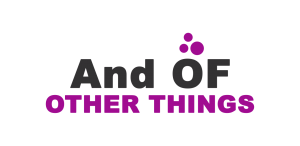Onsite optimisation tools for keyword research, competition, whether to do keywords or not and readability score.
The major asset in your arsenal as a web site or blog owner is the content. This sounds like a self-evident statement, but it is worth unpacking it, taking a step back and reflecting. There are several things to point out about the content.
First and foremost, your content must be findable. There are billions of web pages live on the internet, while you can pay for ‘eyes on your page’ in various ways such as pay per click, the holy grail is what is referred to as ‘organic traffic’. This is comprised of visitors that come to your page because of some search of their own whether that be through a search engine such as Google or from a link on a site they have been reading previously. If no one can find your web page it could have the most brilliant information or advice for the audience, but it is frankly of no use to them or you as owner. We spoke to Mac McCarthy of The Search Equation, and he said as part of their professional seo service, keyword research and content optimisation is fundamental in a a companies online success.
A second fundamental requirement is that the content must be useful to the target audience. If it is not useful you will have a high ‘bounce rate’, visitors coming for seconds and leaving which is a judgement on the value they get from the page. The search engines business models are geared around serving up what the visitors want and find useful. As such content that people often find, visit, and stay on or interact with is rewarded by higher search engine ratings and moves closer and closer to that prime goal of first page listing. In fact, the Google guidelines explicitly state ‘Make pages primarily for users, not for search engines.’. Content must provide value for users.
Many freelance seo professionals, put online content at the forefront of their core processes. Online content needs to be readable. Internet viewers have so much information available to them they cannot afford to spend ages trying to understand if what they are reading will help. You have a short window in which to capture interest the first time around. Do not put barriers such as hard to comprehend text on the front window of your online presence.
How do you address these concerns?
For your pages to be findable the content must be something your audience is looking for. Here is where the concept of keywords, and more specifically long tail keywords becomes crucial. There are multiple free tools and techniques that can be used to find which keywords are worthwhile for you. Including:
- Google AdWords keyword tool. Designed for AdWords customers but can give you suggestions and search volumes.
- WordStream’s Free Keyword Tool
- SEMRush
- KWFinder
- Simply looking at the suggestions that come up as you type your root phrase in Googles search box
- The ‘Searches related’ at the bottom of Googles results page
There are whole articles and sites devoted to the many tools and tips you can use in your keyword research and optimisation efforts.
Your first port of call should be Arefs which gives detailed analysis of backlinks, phrases, domain referrals as well as broken links. You will find this includes both a tool to check your keyword positions which let you judge the effectiveness of your efforts and one other that we must mention. This other tool is the plagiarism checker. Especially if you have content you are trusting colleagues and others to generate for you it is vitally important that it is your own work and not copied. Search engines and people penalise plagiarised content and this will not help your brand.
Once you have found what your desired audience is looking for you must ensure your offering is relevant to that. Your site must honestly reflect the keyword phrases it is optimised for. If someone searches for ‘how to make beeswax candles’ and they come to your page they, quite rightly, expect to find exactly that information available to them and front and centre of the page they land on as a result. This will help ensure that the content is useful to them.
To make your text easy to understand there are a host of free, online readability checkers you can access. These will give you very specific evaluations and guidelines for your prose. A search for ‘online readability checker’ brings up multiple results such as:
- com’s readability checker
- Com/readability-checker
- com
…and many more.
To summarise:
- Make sure your content is what people are looking for and can be found
- Make sure your content is useful and answers the questions.
- Ensure it is easy to understand.
These three principles will stand you in good stead on your journey as an online entrepreneur.





